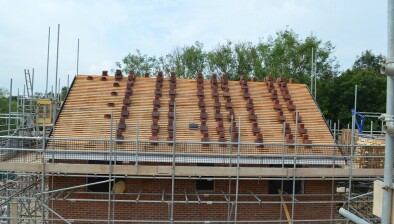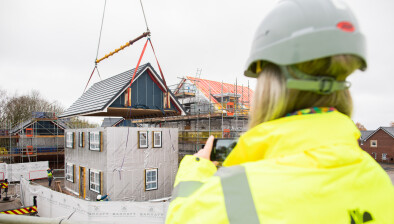Roofers warn of business viability fears amid inflationary pressures but Scots seem more optimistic

The National Federation of Roofing Contractors (NFRC) has called on the UK government to work with the industry to ease the burden on companies after 71% of roofing and cladding contractors said they feel that the survival of their business is being threatened by price inflation and soaring costs.
The warning in the latest quarterly State of the Roofing Industry survey from NFRC and Glenigan comes as businesses are forced to spend more on materials, labour and energy, and clients are tightening their purse strings.
According to the survey, contractors are therefore raising the price of their work with 81% putting their prices up since the same time last year. This follows reports from firms that they can only offer fixed prices to clients for a short period of time, as if they wait too long to get started, the roofer’s costs will already have risen significantly.
Scottish contractors seem a little more optimistic about their survival through this difficult period. Firms operating north of the border reported strong growth during the quarter with 2% saying enquiries increase and 72% enjoying a workload increase.
Construction businesses have been major victims of inflation: the Department of Business, Energy and Industrial Strategy (BEIS) has reported that construction product prices in May 2022 were on average 27.2% higher than in May 2021. A range of factors have contributed: manufacturers have suffered, with raw material costs up, and the energy they use to make their products is now much more expensive. HGV driver shortages, and an increase in the cost of international shipping, have added to the cost of getting materials delivered.
The cost of labour is also on the up. More than two-thirds (68%) of firms said they were spending more on their workforce than a year ago.
Many firms can no longer absorb these costs, and contractors risk making a loss if they don’t put prices up. 69% had raised the price of their work just in the last quarter (between the beginning of April and the end of June 2022).
NFRC is advising clients and businesses alike to have an open conversation about prices and these challenges. A roofing contractor may not be able to give you the same price as a month ago, because supply chain costs have swallowed up the original profit.
The trade body is urging government to offer support to businesses on energy costs. Respondents to the survey noted rising fuel prices as a common cause for concern. Not only does it cost more to fill up the van, soaring fuel prices have increased expense at every stage of the supply chain—from manufacturing goods, to transportation, to the power needed for installation on site. In the end, this means the client pays more or the contractor loses money on their hard work.
Reducing VAT on roof work would also make things cheaper for homeowners and reduce what roofers need to charge, as several companies raised in their response to the State of the Roofing Industry survey. This has already been introduced on solar panels and insulation, but not to larger renovation projects.
James Talman, NFRC CEO, said: “Whilst workloads grew in Q2, we may see this begin to level out in the second half of 2022, as client purse strings tighten. Businesses are facing inflationary pressures that force them to raise costs, and roofing and cladding firms are dealing with rising material prices, skills shortages, and expensive fuel, in an industry where cashflow is already a notorious problem for many businesses.
“All this comes before the impact of the major uplift of gas prices in the autumn. The construction industry showed real collaboration during the pandemic—the industry needs to continue to display that in overcoming this challenge, especially for those who can least afford it.”
Allan Wilén, economics director at Glenigan, added: “Overall roofing contractors’ workload continued to increase during the second quarter. Although contractors anticipate further rise in industry workload over the next 12 months, a stabilisation in new enquiries points to a slowing in the pace of growth. The squeeze on household incomes appears to have cooled domestic RM&I workload and enquiries. In contrast, commercial and public non-residential prospects remain strong.”
















